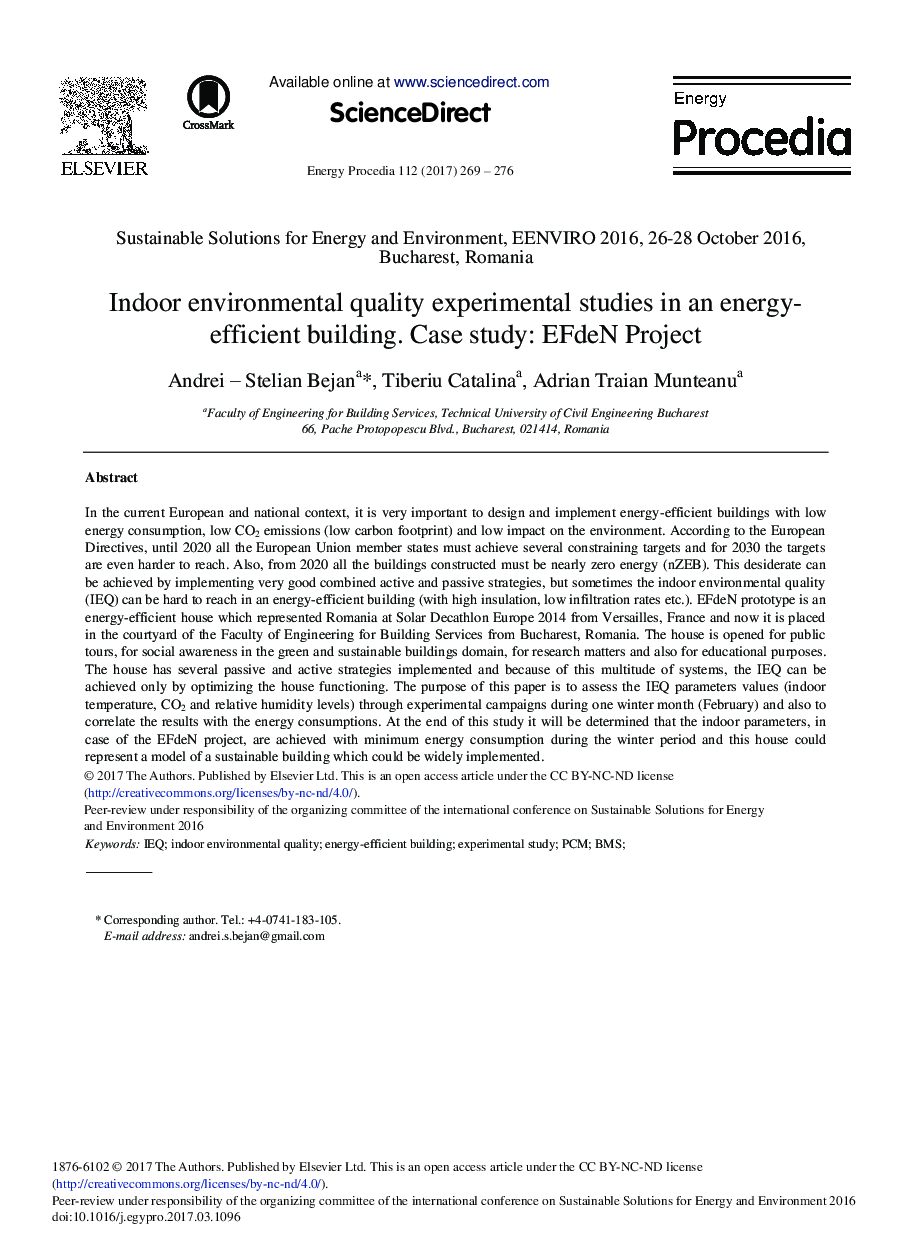| کد مقاله | کد نشریه | سال انتشار | مقاله انگلیسی | نسخه تمام متن |
|---|---|---|---|---|
| 5445828 | 1511123 | 2017 | 8 صفحه PDF | دانلود رایگان |
عنوان انگلیسی مقاله ISI
Indoor Environmental Quality Experimental Studies in an Energy-efficient Building. Case study: EFdeN Project
دانلود مقاله + سفارش ترجمه
دانلود مقاله ISI انگلیسی
رایگان برای ایرانیان
کلمات کلیدی
موضوعات مرتبط
مهندسی و علوم پایه
مهندسی انرژی
انرژی (عمومی)
پیش نمایش صفحه اول مقاله

چکیده انگلیسی
In the current European and national context, it is very important to design and implement energy-efficient buildings with low energy consumption, low CO2 emissions (low carbon footprint) and low impact on the environment. According to the European Directives, until 2020 all the European Union member states must achieve several constraining targets and for 2030 the targets are even harder to reach. Also, from 2020 all the buildings constructed must be nearly zero energy (nZEB). This desiderate can be achieved by implementing very good combined active and passive strategies, but sometimes the indoor environmental quality (IEQ) can be hard to reach in an energy-efficient building (with high insulation, low infiltration rates etc.). EFdeN prototype is an energy-efficient house which represented Romania at Solar Decathlon Europe 2014 from Versailles, France and now it is placed in the courtyard of the Faculty of Engineering for Building Services from Bucharest, Romania. The house is opened for public tours, for social awareness in the green and sustainable buildings domain, for research matters and also for educational purposes. The house has several passive and active strategies implemented and because of this multitude of systems, the IEQ can be achieved only by optimizing the house functioning. The purpose of this paper is to assess the IEQ parameters values (indoor temperature, CO2 and relative humidity levels) through experimental campaigns during one winter month (February) and also to correlate the results with the energy consumptions. At the end of this study it will be determined that the indoor parameters, in case of the EFdeN project, are achieved with minimum energy consumption during the winter period and this house could represent a model of a sustainable building which could be widely implemented.
ناشر
Database: Elsevier - ScienceDirect (ساینس دایرکت)
Journal: Energy Procedia - Volume 112, March 2017, Pages 269-276
Journal: Energy Procedia - Volume 112, March 2017, Pages 269-276
نویسندگان
Andrei - Stelian Bejan, Tiberiu Catalina, Adrian Traian Munteanu,